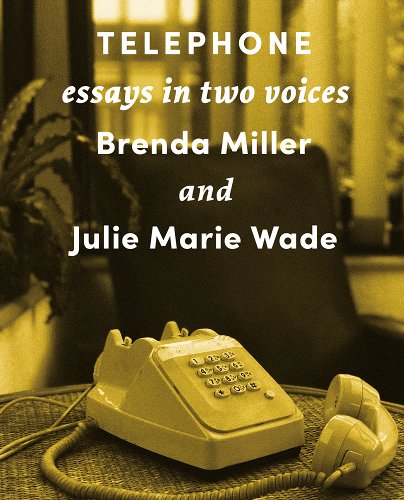Reviewed by Tyler Barton
 I get so tired of talking to myself. I do it all day in my head. I do it in dreams and wake up to a report from my partner about all the things I said in sleep. When I sit down to write, the last thing I want is to have to respond to the last thing I wrote. The blank page is the start of a conversation, but as soon as I respond to its call, the conversation becomes one-sided, and too often, one-note. I’ve been thinking about Ross Gay’s advice in the collaborative, epistolary poetry collection, co-authored with Amy Nezhukumatathil, Lace & Pyrite: Letters from Two Gardens: “Find someone to help navigate this world in words.”
I get so tired of talking to myself. I do it all day in my head. I do it in dreams and wake up to a report from my partner about all the things I said in sleep. When I sit down to write, the last thing I want is to have to respond to the last thing I wrote. The blank page is the start of a conversation, but as soon as I respond to its call, the conversation becomes one-sided, and too often, one-note. I’ve been thinking about Ross Gay’s advice in the collaborative, epistolary poetry collection, co-authored with Amy Nezhukumatathil, Lace & Pyrite: Letters from Two Gardens: “Find someone to help navigate this world in words.”
So it’s fair to say I opened Telephone: essays in two voices (Cleveland State University Poetry Center, 2021) by Brenda Miller and Julie Marie Wade with equal parts excitement and envy. The winner of CSU’s 2020 Essay Collection Competition, it is the deeply personal and playful collaboration of two essayists working at the peak of their stylistic powers. When I finished, I was even more excited—about writing, about life—and maybe even more envious.
Each quotidian title (“Heat Index”, “Cars”, “Dreams” “Camera” “Exercise”) serves as the essay’s topic—a clothesline from which the following few pages loosely hang. The topics aren’t new, but the approach to them is always angular and specific. The authors take turns reflecting on the prompt word with associated memories, moments, factoids, or feelings from their “personal and cultural histories.” Each essay takes shape in either one-paragraph chunks or short multi-paragraph sections separated by white space, numerals, or a glyph. One author writes a bit, and then the other responds, sometimes taking the final word of the first writer’s latest addition to be the start of a new section. Sections are not attributed, so you rarely know who is writing, despite trying to track style or personal history.
In my favorite essay, “Works In-Progress,” the ending sentence of the first section is “I remember the way my pulse climbs my neck like a ladder when I say it out loud: I want to write something, Mom.” The first sentence of the next section is: “My mom has beautiful handwriting, a flow of lines as delicate as her fingers: small knuckles, slender nails, groomed.” Each section remains connected, albeit loosely, to the never spoken thematic question of “How has my language obsession emotionally impacted my life?” However, this piece pushes far past the common boundaries of a “Why I Write” essay. It moves surprisingly, sometimes jerkily, like jazz —as do all the pieces in this collection. This loose structure works because every sentence, every paragraph, is authentic, honest, and crafted like jewelry.
Even within a section, when it’s a single writer working, the transitions between paragraphs occur like thrilling jumps. In the same essay, one writer transitions from a childhood memory of pondering what word to put down in a patch of quickly drying concrete, to a conversation with a dying poet friend, to the two sets of wedding vows she wrote, before finally landing on lines she submitted for a public art installation—the bones of which she’d planted within an earlier section’s investigation of a girlhood habit of writing her own odd dictionaries.
In another standout essay, “Bridges: An Index,” it is written, “…time, life, the world moves oh-so-forward in a current that’s inexorable. We can’t hold onto anything, no matter how much we try.” This idea speaks to the truth of life, but it also describes this book. Although Telephone does not concern itself with making linear sense, neither does it create a whiplash reading experience. It creates felt sense. It’s not about an accretion, but rather a web of meaning, one that stretches between homes on opposite sides of the country—a web you walk through to find, hours later and many streets away, is still in your hair.
Some pieces seem to be challenges. You can almost hear the writers smiling at each other, the way friends do when an idea gets hatched: Can we make an essay out of this? Take “Heat Index,” for example, which seems to be a series of flash essays, each responding to a word tangentially related to “heat,” words which serve as section subtitles climbing in alphabetical order, yet still seemingly pulled from a hat. As a writer of flash myself, I’d argue that any of these 100-word chunks could stand alone in the pages of Wigleaf, Jubilat (RIP), or BOMB, perfect to be read aloud at an open mic. Taken together, these individual parts also add up to something exciting, in the way that any detail in a great painting can be as beautiful as the entire work
My favorite thing about Telephone is how it reads like life itself when I’m closely observing it: the simple unpredictable connection of every moment. Essays will trick you into thinking their course is round and whole when there is, in fact, no course at all except intuition. That’s not to say the book is sloppy or craft-less. In fact, the craft is that of conversation: twisting, divergent, associative, oh-that-reminds-me, did-I-ever-tell-you, and wait-I-have-to-pee-I’ll-be-right-back, okay-where-were-we? Conversation isn’t easy. It requires close listening, empathy, flexibility, vulnerability, and work.
The magic of Miller and Wades’ style is what poet and essayist Elisa Gabbert calls, “the invisible transition, where there is no clear, necessary connection between two paragraphs, and yet—something happens. The juxtaposition isn’t as jarring as a non sequitur… In fact, I’d argue that what’s mostly “lyric” about a so-called lyric essay are these transitions, these leaps, more so than some inherently “poetic” quality of the language. Invisible transitions make a text feel more open…” This is a book for people who suspect that the writing process is more than a way to create art—it’s a way to live.
 Tyler Barton is the author of the story collection Eternal Night at the Nature Museum (Sarabande Books, 2021) and the flash chapbook, The Quiet Part Loud (Split/Lip, 2019). His stories have appeared in The Kenyon Review, The Iowa Review, and The Adroit Journal. Find him at tsbarton.com, @goftyler, or in Saranac Lake, New York.
Tyler Barton is the author of the story collection Eternal Night at the Nature Museum (Sarabande Books, 2021) and the flash chapbook, The Quiet Part Loud (Split/Lip, 2019). His stories have appeared in The Kenyon Review, The Iowa Review, and The Adroit Journal. Find him at tsbarton.com, @goftyler, or in Saranac Lake, New York.


